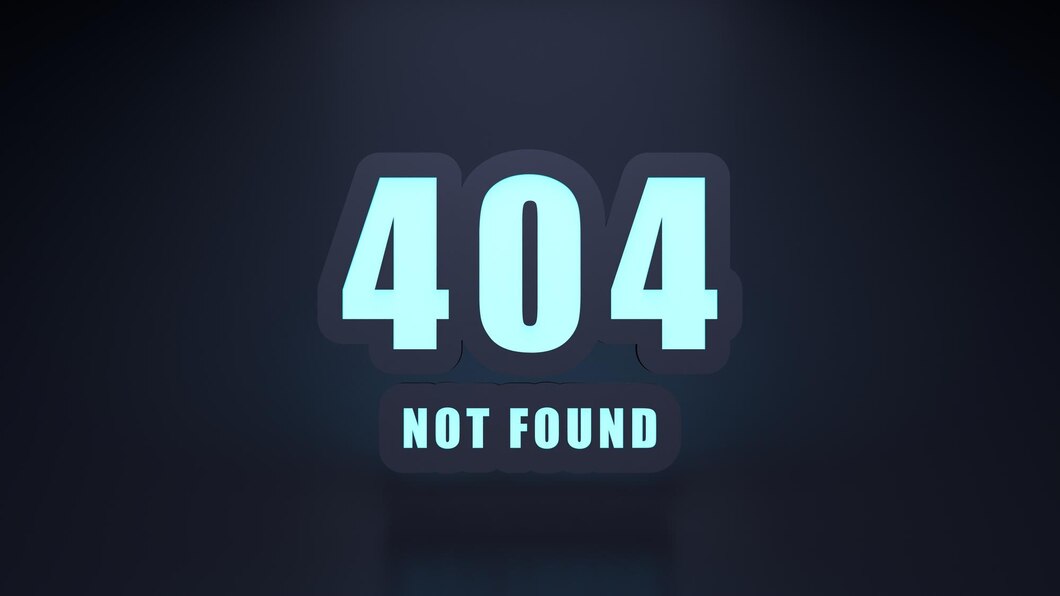It’s crucial to keep users interested even when they come across an error webpage in the highly competitive internet environment. This refers to using your URL structure to advance your brand and grow your company.
A 404 page can be mistaken for a purely technical page. However, it’s also a chance to showcase the character and originality of your brand. An innovative 404 page can not only placate irate consumers and decrease bounce rates (the number of visitors who abandon your site), but it can also showcase your brand identity.
What do 404 pages mean?
When a server cannot locate the requested webpage, a user is directed to a landing page known as an HTTP 404 page. A user may do this by entering an address into a search field or by clicking on a link.
Numerous factors can cause a user to land on a 404 page. These consist of:
- There is no such page. It’s possible that a developer is currently upgrading your website and hasn’t yet made the requested page. Another possibility is that a developer erased the page unintentionally due to a mistake.
- It’s possible that the page was transferred to another URL slug. In order to improve a URL’s search engine optimization (SEO), a new term may be added as the slug.
- The URL was entered incorrectly by the user. Any minor error could perplex a server. A user will be directed to a 404 page even if there is only one additional space in the URL.
- A server issue might exist. The website can be unavailable at a given time or the internet connection might be disrupted.
What makes 404 pages significant?
The user didn’t intend to be forwarded to a 404 error page. It can be a frustrating situation. Users may become frustrated and quit your website if they can’t find the information, goods, or services they’re looking for, which could prevent you from making a sale.
Additionally, these 404 issues may indirectly impact how you appear on search engine rankings (SERPs). Poor user experience (UX) is caused by a website’s abundance of broken links that end up on 404 pages, and Google considers user involvement when determining a website’s ranking.
A 404 page need not be a dead end, though. If the design of your error page can positively impact user experience, it can keep users on your site and maintain your SERPs rating. Good 404 pages captivate, amuse, and direct a user to their intended destination. While promoting your business, a compelling 404 page can transform a bad consumer experience into a good one.
Six components to include on your 404 page
Users with a diverse range of demands and interests must find a decent 404 page appealing. While some will be looking to purchase from you straight away, others may want to find out more about your business or get solutions to problems with your products.
Your 404 page should offer a way to satisfy any wants a customer may have while also easing any frustrations your visitors may be feeling. In the sections that follow, we’ll go over a few essential components that every 404 page needs to contain in order to calm irate users and boost conversion rates.
Simple 404 error
You are free to use any text you like in your 404 error message. Make use of it to appeal to your target audience. Choose a message that is straightforward, sympathetic, or humorous rather than one that is overly generic, such as “the localhost page cannot be located” or “page not found.”
Customer-friendly error messages can include words like “oops” or “sorry.” You can also incorporate movie quotes, cultural allusions, and other elements that your target demographic would find appealing.
Your 404 message is an opportunity to showcase the character of your business. Though, keep in mind that dissatisfied visitors aren’t in the mood to read lengthy content.
Design components that match the rest of your website
You should inform visitors that they are still on your website as soon as they arrive at your 404 page. Because of this, it’s crucial that the web design components on your 404 page stick to the same overall design scheme as the rest of your website.
Your 404 page may use the same color scheme as the rest of your website, prominently display your company emblem, or even include graphics associated with your industry. If your business, for instance, offers computer hardware, you might include a photo of someone using one of your machines.
Linking to different pages on your website
Make it simple for people to reorient themselves. Even if you don’t know exactly where they want to go, you should provide links or calls to action (CTAs) to some of your website’s most visited or highest-converting pages. You can boost your chances of making sales by directing visitors to these pages.
You can use a service like Google Analytics to determine your website’s most popular pages if you don’t already know which ones they are. But be careful when you add links; too much information on the 404 page can irritate users and make them quit.
Links to appealing discounts or coupons for your visitors can also be included. These may not only boost conversions but also cheer up users who accidentally land on your 404 page.
Search bar
You don’t want to exclude users who might be searching for content other than the popular pages on your website. Users that come to your website with a specific intent (like buying a specific item) are frequently simpler to convert into consumers. In light of this, it could be a good idea to include a search box where users can enter their search terms.
However, you might want to keep things straight if your 404 page already has a lot of information. Making your error page simple to use should be your main objective. Users may choose to quit if it is overly cluttered rather than sifting through paragraphs of material to find what they need.
Navigation bar
Maintaining the same navigation bar in the header of your 404 page is part of adhering to the overall theme of your website. Your website’s navigation bar may also have your logo, links to your home page, an about page, and your items. Include the footer of your website as well. It might include links to your company’s social media accounts, website sitemap, and privacy statement.
Include your company’s contact information as well. In addition to your email address, don’t forget to include a phone number. Customers that make the effort to call your company probably have goals that make them ideal conversion targets.
Personality
Display your identity to the audience. Consider adding humor, creativity, engagement, or relatability to your 404 page. A superb 404 page can effectively convey your company’s brand. Use photos, animated GIFs, or other distinctive components to showcase the individuality of your business.
It’s crucial that your 404 page engages the people you’re trying to reach. For instance, if your website offers video game tutorials and instructions via membership, you may include a thrilling scene from a well-liked game on the 404 page.
Examining closely: essential aspects of your 404 page
User experience opportunity: User mistake
Users are only given the choice to return to their previous location on a typical, out-of-the-box 404 page. Such a bummer. You should create 404 pages that direct visitors to other areas of your website, typically the home or features pages.
Don’t just send them links either. To provide visitors with a sense of control over their experience and improve task success, include a search bar on the 404 page.
To increase user success rates, reduce clutter
A user who is already frustrated will become cognitively overloaded if you overwhelm them with a 404 page that is filled with links to every corner of your website.
The best approach is to create a 404 page with a few essential links, including one to the Home page so users who aren’t yet clear about what they’re looking for may easily exit. You may also link to a blog, a product feature, or an About Us page.
The most advantageous 404 pages are chances for branding
A 404 page may be the user’s first encounter with a brand for many people. One small error page is under a lot of demand. Observe fundamental best practices, such as making sure the page’s design blends nicely with the rest of the website. Make sure the iconography and images are consistent with other sites or goods, and that the microcopy reflects the overall tone.
Make a fantastic 404 page for your business
It costs money, time, and effort to create a fantastic company website. However, even the most effective website won’t help you if people leave before you can turn them into paying clients. You may enhance the user experience by developing an interesting 404 page. Additionally, you can lessen the possibility that a mistake would result in you losing out on a possible transaction.
You need a good website and a clever marketing plan if you’re starting a business. You can get the professional assistance of web design specialists from companies like Yukti Digital to finish digital projects like a 404 page.






